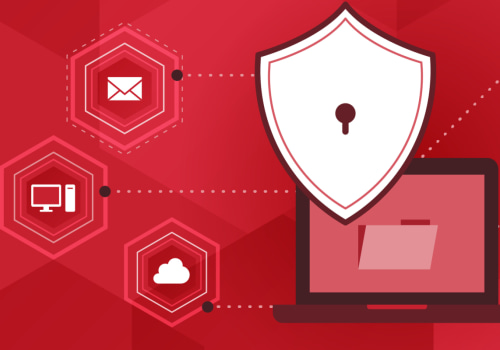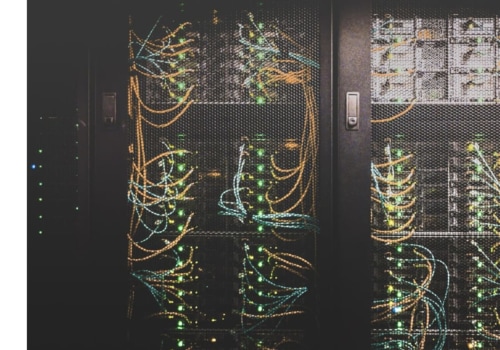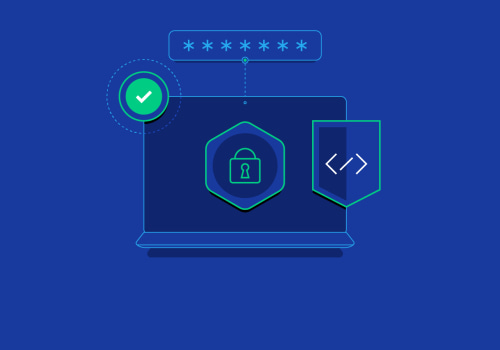In today's interconnected digital world, it is essential for organizations to have strong system access control policies in place. These policies help to ensure that only authorized personnel have access to sensitive information, and that all access is properly logged and monitored. This article provides a comprehensive overview of system access control policies, including their purpose, components, and best practices. Access control policies are designed to protect an organization's information systems, data, and networks from unauthorized access. They should provide a clear set of rules that define who has access to what information, under what circumstances.
Access control policies should also specify the kinds of activities that are allowed and prohibited on the network and how data is protected against unauthorized access or use. This article will cover the key elements of a system access control policy, including authentication and authorization techniques, user management, and logging and monitoring. It will also provide guidance on how to create an effective policy and best practices for implementation.
System access control policies
are a set of rules, regulations, and procedures that organizations use to ensure the security and privacy of sensitive data. These policies determine who has access to certain data or systems, what type of access they have, and when they have access. System access control policies are essential to the security of an organization's data, as they help to protect it from unauthorized access or misuse.Understanding why system access control policies are important is the first step towards implementing them effectively. Organizations need to protect their data from unauthorized access and use, which could result in data loss, theft, or destruction. System access control policies help to ensure that only authorized personnel have access to sensitive data, and that they do not misuse it. There are several different types of system access control policies.
User authentication is one of the most common types, which requires users to provide a username and password to gain access to a system. Role-based access control (RBAC) is another type of system access control policy that assigns specific roles and permissions to users, allowing them to only access certain areas of a system. Other types of system access control policies include multi-factor authentication, audit logging, and encryption. When implementing system access control policies, organizations should consider best practices for ensuring the security and privacy of their data. Organizations should ensure that user authentication is robust and secure, and that passwords are regularly updated.
Additionally, organizations should ensure that RBAC is properly implemented, with appropriate roles and permissions assigned to each user. Organizations should also consider implementing audit logging, which allows them to track user activity on their systems. Organizations can look to real-world examples of system access control policies for guidance on how to implement them effectively. For example, the healthcare industry is subject to strict regulations regarding the security and privacy of patient data. Healthcare organizations must implement strict user authentication procedures and role-based access control policies to ensure that only authorized personnel have access to patient data.
Additionally, healthcare organizations must implement audit logging procedures to track user activity on their systems. When evaluating system access control policies, organizations should look for robust user authentication procedures, appropriate RBAC implementation, audit logging capabilities, and encryption protocols. Additionally, organizations should ensure that their system access control policies are regularly updated to reflect changes in their environment. While system access control policies are essential for protecting sensitive data, they can be difficult to implement and maintain. Organizations must ensure that their policies are regularly updated to reflect changes in their environment, as well as changes in technology. Additionally, organizations must ensure that their personnel are properly trained on how to use the system access control policies.
Finally, organizations must have an effective monitoring process in place to detect any unauthorized access or misuse of their data.
What to Look for When Evaluating System Access Control Policies
When evaluating system access control policies, it is important to consider several key factors. First, it is essential to ensure that the policies are effective in protecting data. This means that the policies must be clearly defined and enforced, as well as regularly reviewed and updated. Additionally, it is important to ensure that the policies are compliant with relevant laws and regulations.This includes making sure that the policies adhere to industry standards, such as those set by HIPAA and GDPR. Finally, organizations should also assess whether the policies are easy to understand and user-friendly. This will help ensure that users can easily understand and adhere to the policies.
What Are System Access Control Policies?
System access control policies are rules or procedures that are put in place to protect data and systems. They are used to define which users have access to certain data or systems, what type of access they have, and when they have access.These policies help to ensure that only authorized individuals have access to data and systems, and that these individuals are limited in what they can do with the data or system. System access control policies can include roles-based access control, which assigns specific roles to individuals and limits their access according to their role. They can also include authentication requirements, such as two-factor authentication or single sign-on, which is used to verify that users are who they say they are. They can also include network security protocols, such as firewalls, which prevent unauthorized users from gaining access to the system. System access control policies are essential in protecting sensitive data and ensuring that only those who need access to the data have it. They help to ensure that data is kept secure and private, and that unauthorized individuals are not able to access the data or system.
By implementing these policies, organizations can ensure that their data is safe and secure.
Challenges Associated With Implementing and Maintaining System Access Control Policies
Implementing and maintaining system access control policies can be a difficult and time consuming process. One of the main challenges is getting users to accept and comply with the new policy. Change is never easy, and users may be resistant to any changes to their current access rights or how they use the system. Another challenge is managing multiple systems. Different systems may require different access control policies, which can be difficult to manage.Additionally, user roles and access rights must be regularly updated as new users are added or existing users change roles or responsibilities. Finally, organizations must ensure that their system access control policies are kept up to date with the latest security protocols and best practices. Regular audits and testing should be conducted to ensure that the policies are effective in protecting sensitive data.
Different Types of System Access Control Policies
System access control policies are essential in protecting data security and privacy. There are a variety of different types of policies that can be implemented to ensure that only authorized personnel have access to certain data or systems. These include user authentication, role-based access control, and more.User Authentication:User authentication is the process of verifying a user's identity before granting them access to a system or data. This is typically done through the use of passwords, biometrics, or other forms of identification. It is important to ensure that only authorized personnel have access to the system or data by properly setting up user authentication.
Role-Based Access Control:
Role-based access control (RBAC) is a system used to assign specific roles and permissions to users. This allows for more flexible and secure access control policies, as it allows for different users to have different levels of access depending on their assigned roles.It also makes it easier to manage and track access to the system or data.
Other Types of System Access Control Policies:
In addition to user authentication and role-based access control, there are other types of system access control policies that can be used to protect data. These include rules-based access control, which defines access rules based on certain criteria, and identity and attribute-based access control, which limits access based on an individual's identity or attributes.Examples of Real-World System Access Control Policies
Examples of system access control policies are essential in understanding how they can be used to protect sensitive data. There are several common types of access control policies that organizations can implement, including user authentication, authorization, and access restriction.User authentication
requires users to log in with a username and password in order to gain access to a system.This type of policy ensures that only authorized users have access. It also helps to track who is accessing the system and when.
Authorization
is another type of system access control policy. This policy defines what type of access a user has to specific data or systems. For example, an employee may be able to view certain data but not modify or delete it.Authorization can also be used to define which users have access to certain features or functions of a system.
Access restriction
policies limit user access to certain data or systems. These policies can be used to restrict access to sensitive data, prevent unauthorized users from accessing the system, and restrict access based on time frames. For example, an employee may only be able to access the system during certain hours. These are just a few examples of real-world system access control policies. When creating your own policies, it is important to consider all the different types of access that need to be restricted and the different levels of security that need to be in place.By implementing the right policies, organizations can protect their sensitive data and ensure that only authorized users have access.
Why Are System Access Control Policies Important?
System access control policies are critical to ensure that sensitive data is kept secure and private. Without these policies in place, organizations risk unauthorized access to their systems and the data contained within them. Furthermore, without a system access control policy, organizations can be held liable for any unauthorized access or misuse of data. Organizations must maintain control over who has access to their systems and the type of access they have in order to protect the data stored within them. Access control policies help organizations achieve this goal by granting only the necessary privileges to each individual user.This helps ensure that only those with the appropriate authority can access the data, preventing unauthorized access from occurring. In addition to preventing unauthorized access, system access control policies also help protect against data breaches. By restricting who can access certain information and when they can access it, organizations can minimize the risk of a data breach occurring due to negligence or malicious intent. Finally, system access control policies help organizations comply with regulations such as HIPAA and GDPR. These regulations require organizations to protect the privacy of their customers’ data, which can be done by implementing a system access control policy. In summary, system access control policies are essential in ensuring the security and privacy of sensitive data.
They provide organizations with the ability to control who has access to their systems, as well as what type of access they have. By implementing a system access control policy, organizations can minimize the risk of unauthorized access and data breaches, as well as comply with regulations such as HIPAA and GDPR.
Best Practices for Implementing System Access Control Policies
System access control policies are essential for safeguarding the security and privacy of sensitive data. It is important to consider the best practices for implementing these policies in order to ensure that the data is as secure as possible. The following are some of the best practices for implementing system access control policies:Multi-Factor Authentication:Multi-factor authentication is one of the most effective methods of securing data.This process requires users to provide more than one form of authentication, such as a password, a code sent via SMS, or a biometric scan. This ensures that only authorized users can access the data or system.
Restricting Access to Sensitive Data:
Restricting access to sensitive data is another important practice for protecting data security. Access should be restricted only to those who need it, and any access granted should be monitored and logged. This helps to ensure that unauthorized users do not gain access to the data.Enforcing Strong Passwords:
Enforcing strong passwords for all users is an important practice for protecting data security.Passwords should be at least 8 characters long and should include a mix of upper and lowercase letters, numbers, and symbols. Passwords should also be changed regularly to prevent unauthorized access.
Encryption:
Encryption is another best practice for protecting data security. By encrypting data, it makes it much more difficult for unauthorized users to gain access to the data. Encryption also helps protect against data loss in the event of a breach.Auditing and Monitoring Access:
Auditing and monitoring user access is also important for protecting data security.By regularly auditing user access, it helps to ensure that only authorized users have access to the data or system. This helps to reduce the risk of unauthorized access or data loss. System access control policies are essential for protecting sensitive data and ensuring compliance with regulations. By understanding the different types of access control policies, the importance of their implementation, best practices for implementing them, and challenges associated with them, organizations can ensure that their data is secure and compliant. Organizations should evaluate their system access control policies regularly to ensure that they are meeting their data security and privacy goals.








Leave Message